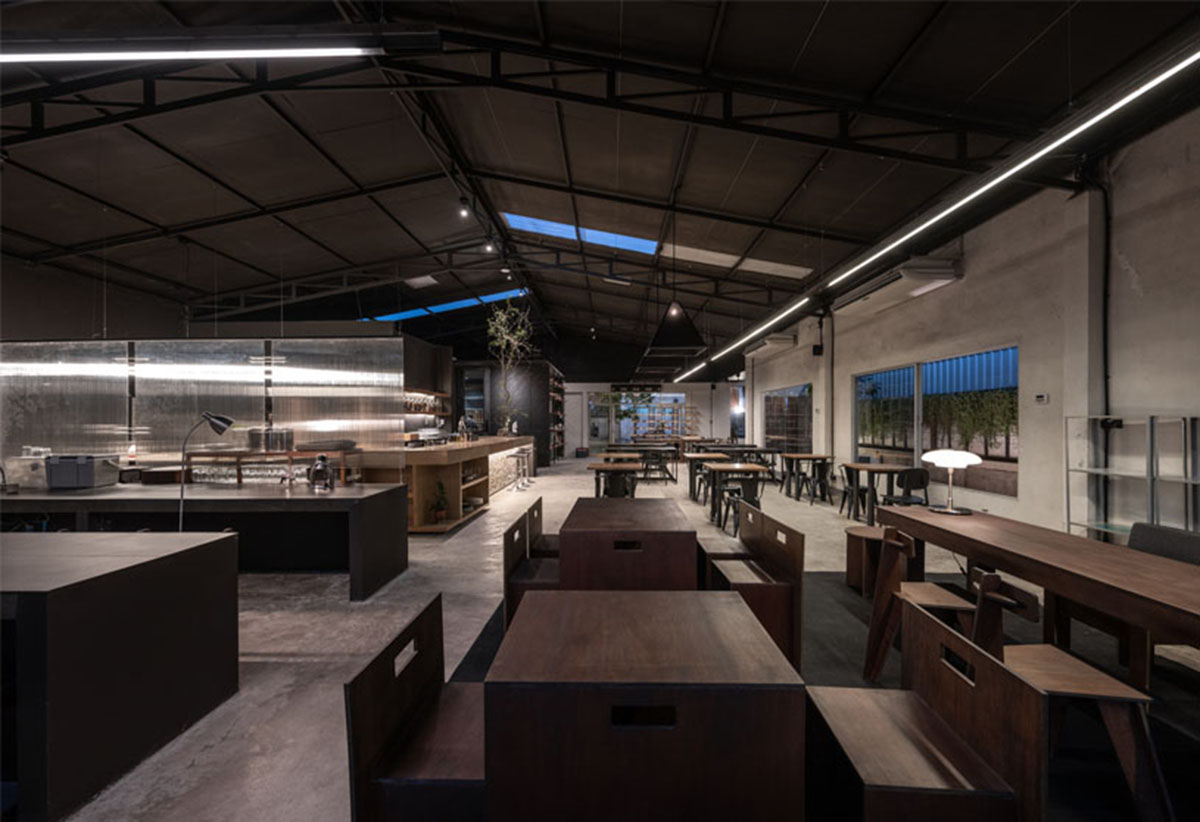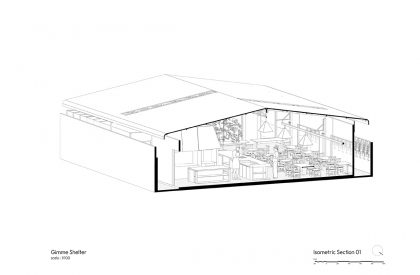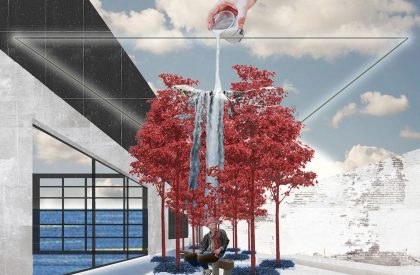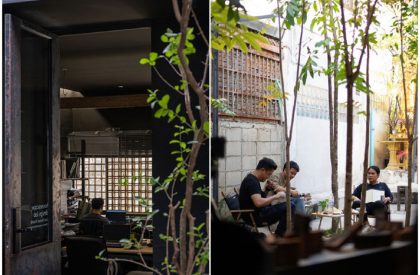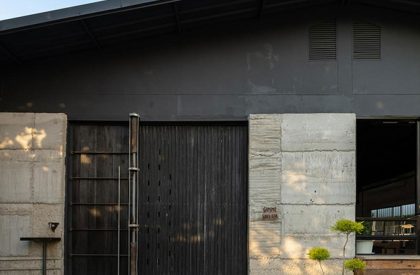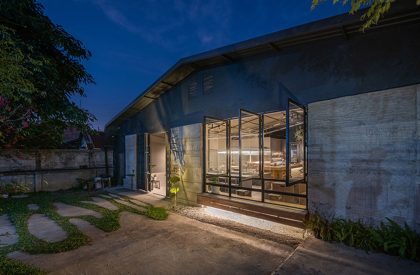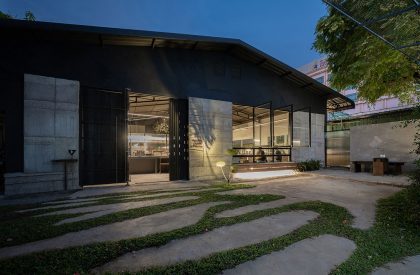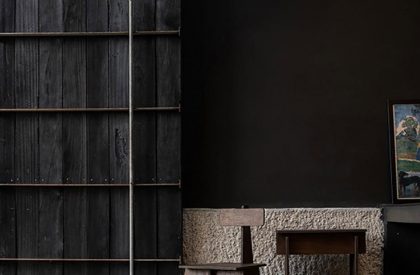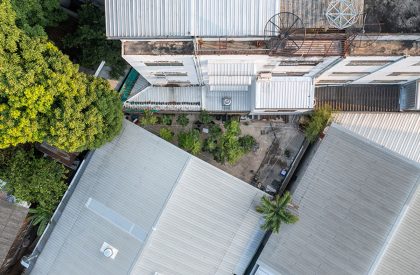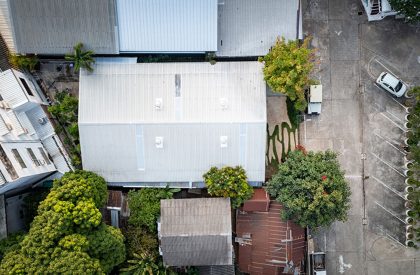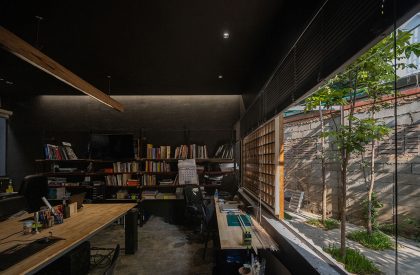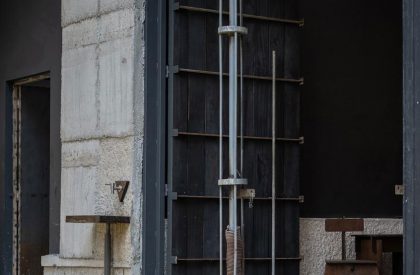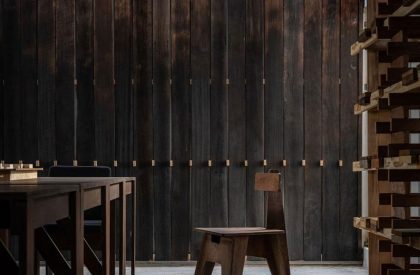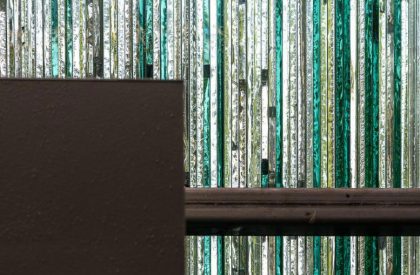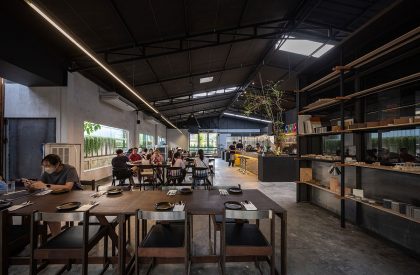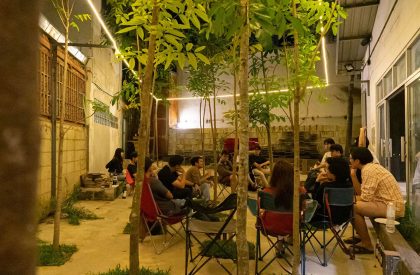Excerpt: Gimme Shelter is a community space designed by the architectural firm Housescape Design Lab. The gimme shelter is a commercial area that consists of a cafe, restaurant, office, and workshop area. In particular, restaurant and café type programs often borrow the other language of architecture to attract customers.
Project Description
[Text as submitted by Architect] Today, the architectural design for commercial spaces is expected and driven to try to communicate visually with users or as a tool to attract people to spaces through visualization, photography, and social statement inevitably. In particular, restaurant and café type programs often borrow the other language of architecture to attract customers. But as a design worker in Chiang Mai, A city in which such businesses are driven by an architecture that requires Instagram ability, is it necessary to question the situation through the design work? At least in order not to overlook the true essence of our profession.
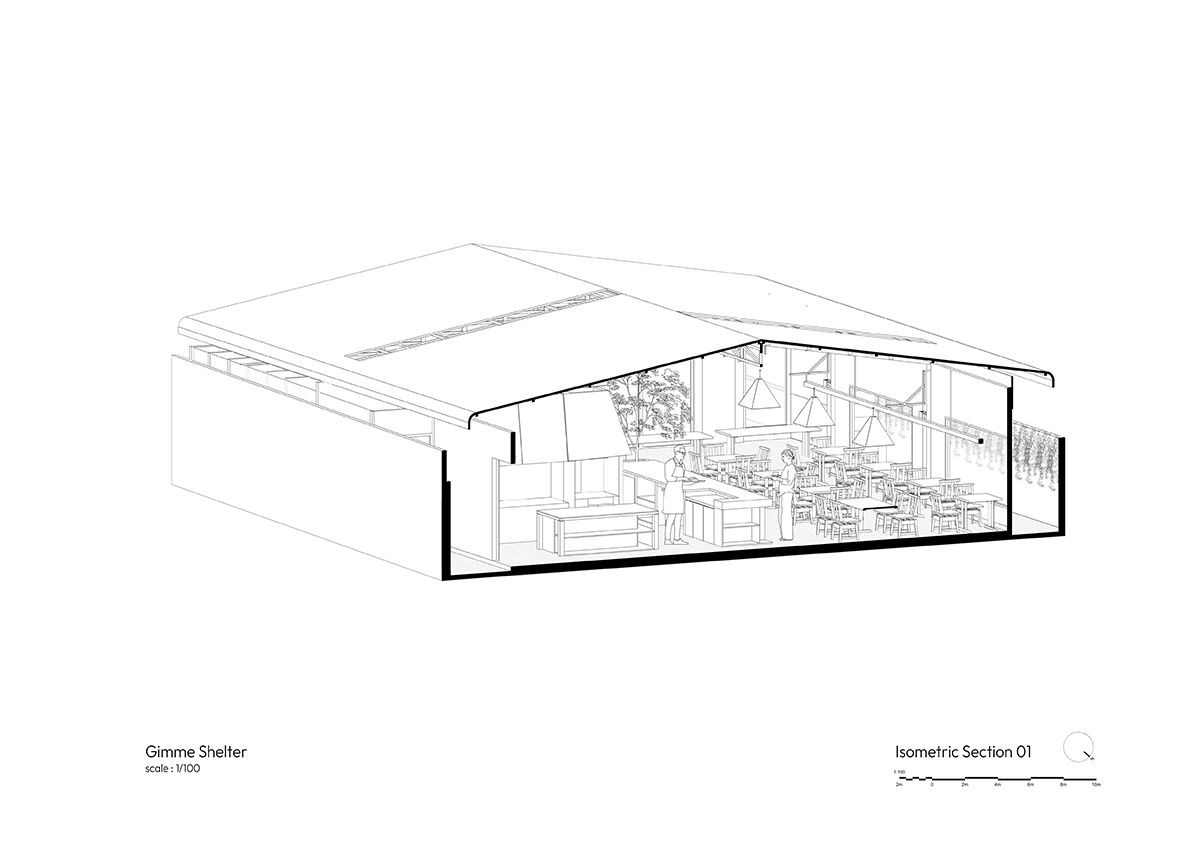

The gimme shelter is a commercial area that consists of a cafe, restaurant, office, and workshop area. That replaced the old warehouse in the parking lot of the Chiang Mai Rattanakosin Hotel. To become a multi-function area, the architect initially wanted a warehouse area in the city with the criteria of a car park and began to develop more space utilization when exploring and renovating the building. The main program is ranked first by cafes and restaurants.
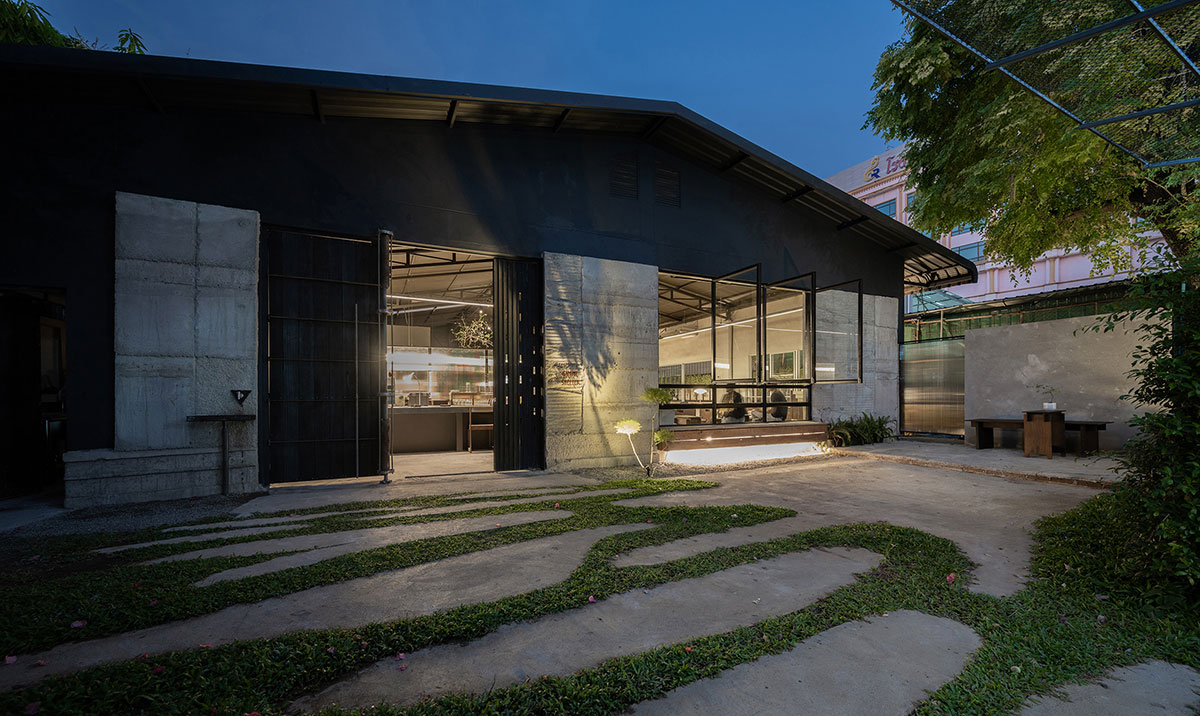
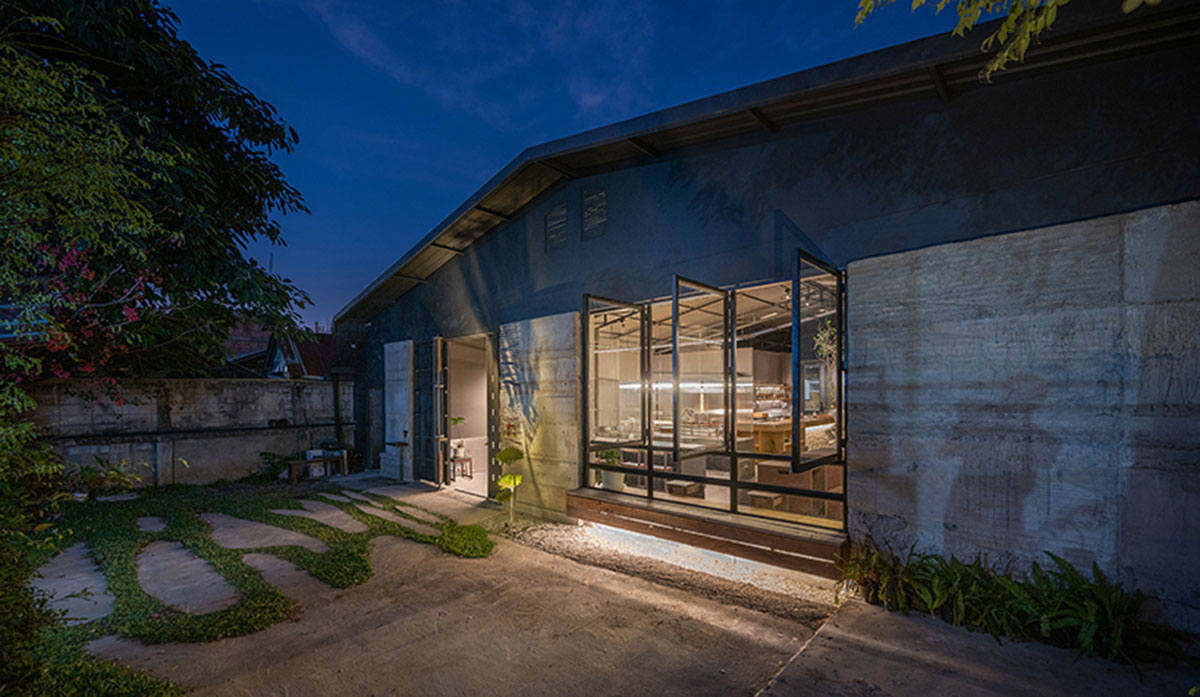
The design office, workshop, and garden are hidden in a backspace between the surrounding buildings. The mentality of renovating using the original warehouse language combined with a simple It uses industrial materials that are commonly available but are adapted to the atmosphere. We will find that the surplus is not borrowed from anything other than the essence of the original area’s solution. It is a method for improving the building that has been chosen to collect traces from fit things.
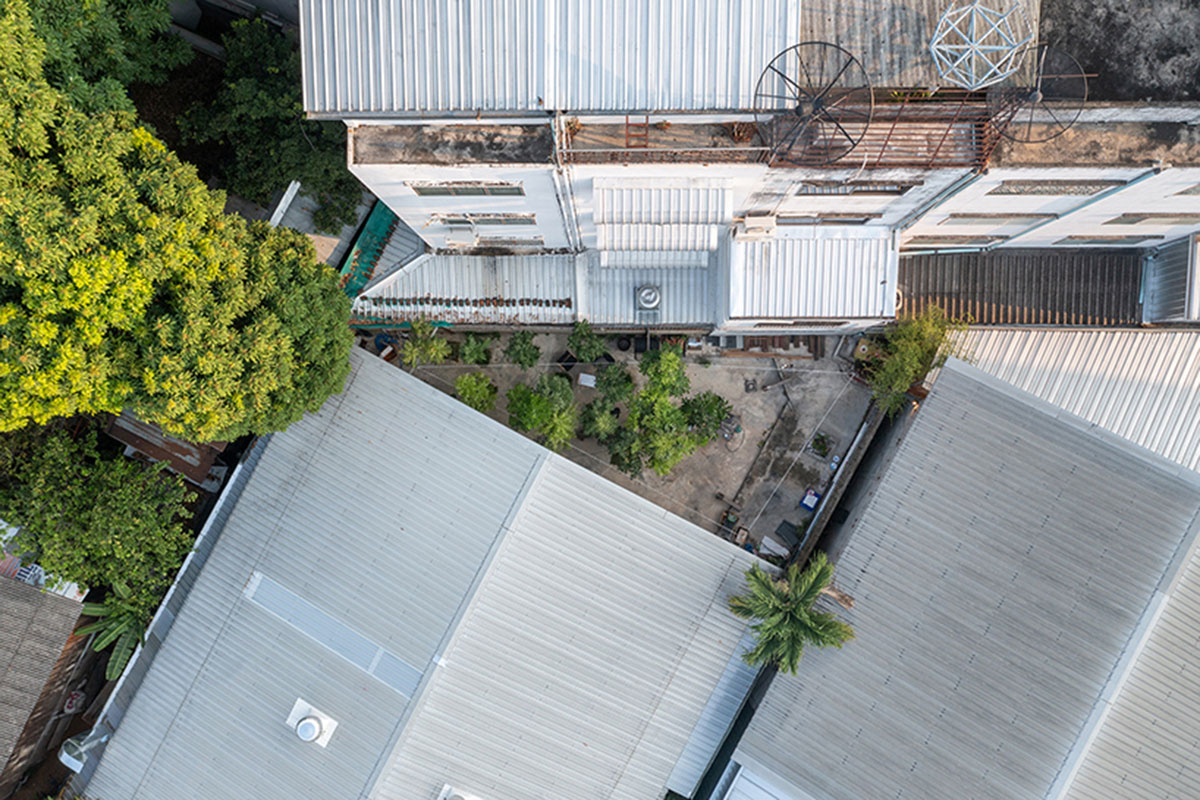

In addition to the issue of architectural language, the architects intended to make the area open and expansive. And to solve the original problem of the building, there is also the insertion of a Hidden Program that people in various groups will become “Space users and are not the only customer.”
The bar area is open to prepare meals. To see the food activities from the kitchen to the customers to make the restaurant an open space, People can talk and have an equal level of interaction both at the dining table and with the restaurant staff. It’s the design language that was intentionally inserted into this restaurant space. And there is also a small discussion area.
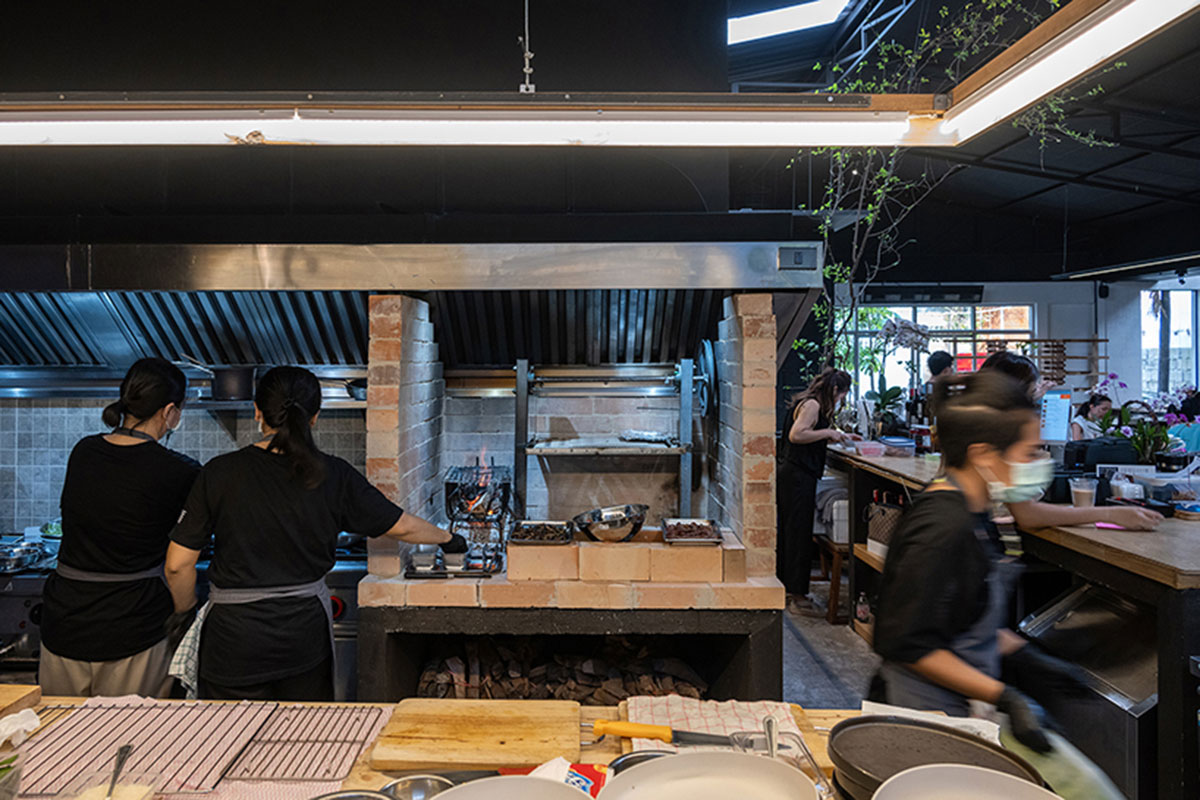
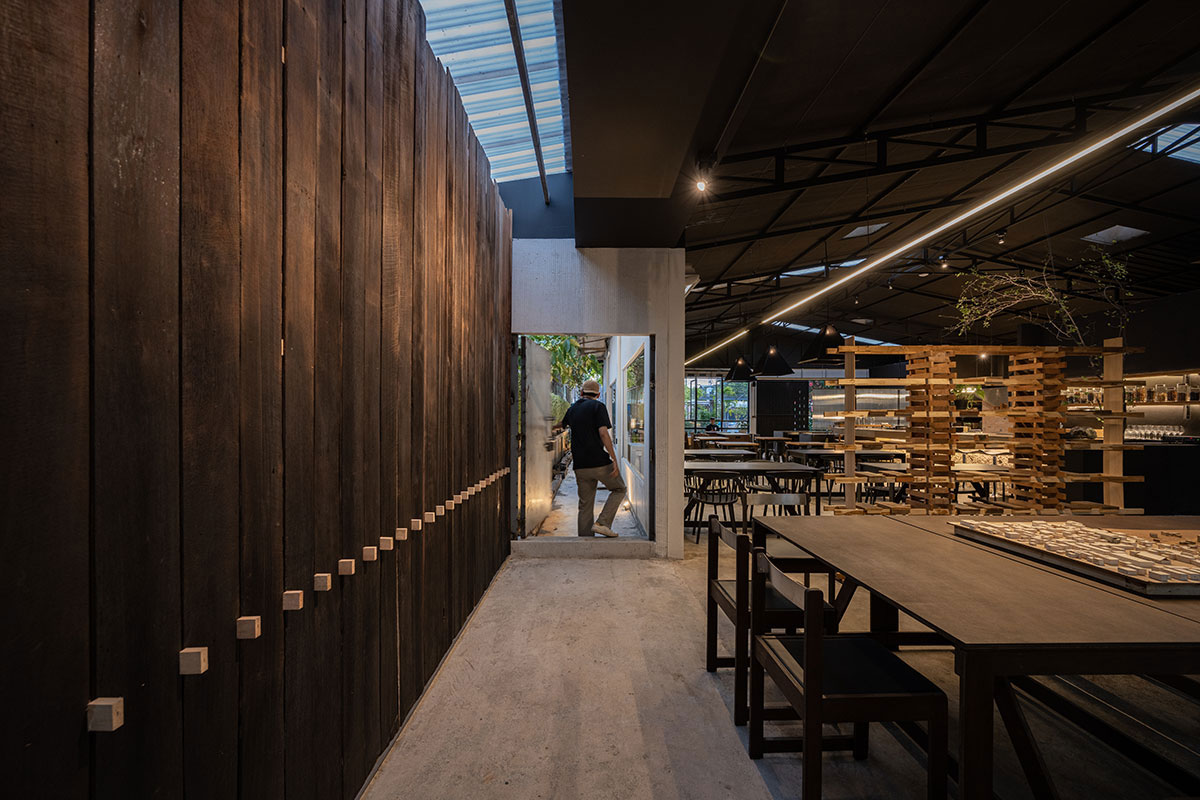
That draws conversations throughout the design of urban development, social and political dimension that welcomes both the general public and students can come and talk without referring to the chronological and formal academic discussions. These activities are interspersed in the mahogany orchards separated by the space behind the shop. without separating the users of the area.


After practicing the profession for a while, we were convinced that real architecture will leave an indelible trace in our minds by only elementary architectural action. It also drives the train of thought between architectural expression. And if we can expect more, we hope that our city will have an architecture related to the memories of diverse people. As an architect, is it possible to design a commercial space that opens the door to receive an equal number of people? Create overlapping social dimensions. And leave some memory traces in the quality of small, person-to-person conversations.
